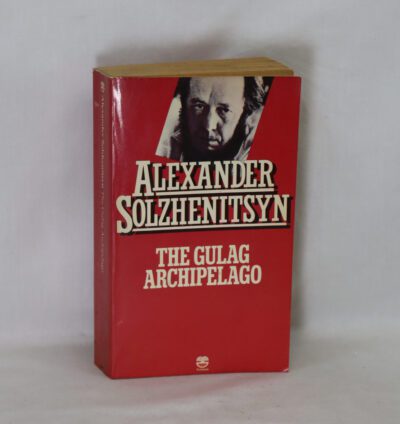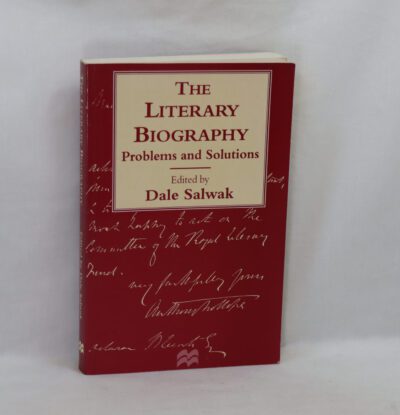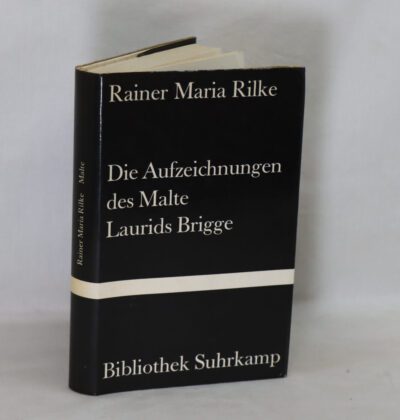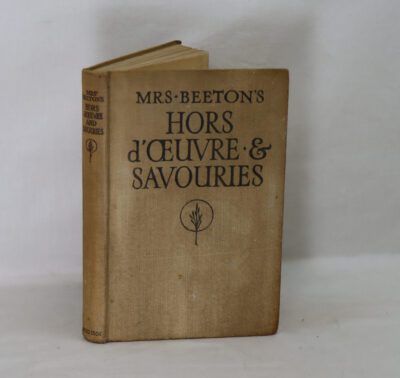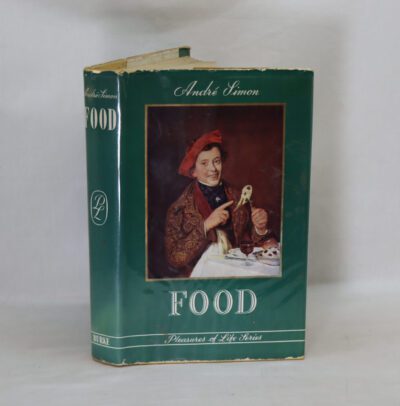Almayer's Folly.
By Joseph Conrad
Printed: 1962
Publisher: Folio Society. London
| Dimensions | 15 × 23 × 2.5 cm |
|---|---|
| Language |
Language: English
Size (cminches): 15 x 23 x 2.5
Condition: Fine (See explanation of ratings)
Your items
Item information
Description
In a fitted box. Grey cloth with black embossed image of sampan boats on both boards. Black title plate with gilt lettering on the spine.
It is the intent of F.B.A. to provide an in-depth photographic presentation of this book offered so to almost stimulate your feel and touch on the book. If requested, more traditional book descriptions are immediately available.
Almayer’s Folly is Joseph Conrad’s first novel, published in 1895 by T. Fisher Unwin. Set in the late 19th century, it centres on the life of the Dutch trader Kaspar Almayer in the Borneo jungle and his relationship to his mixed heritage daughter Nina.
Almayer’s Folly is about a poor businessman who dreams of finding a hidden gold mine and becoming very wealthy. He is a white European, married to a native Malayan; they have one daughter named Nina. They live in the village of ‘Sambir’, actually Tanjung Redeb in the Berau Regency of the East Kalimantan province, Indonesia. He fails to find the goldmine, and comes home saddened. Previously, he had heard that the British were to planning to conquer the Pantai River (Berau River in reality), and he had built a large, lavish house near where he resided at the time, in order to welcome the British, with whom he hopes he could trade. However, the conquest never took place, and the house remained unfinished. Some passing Dutch seamen had called the house “Almayer’s Folly”. Now, Almayer continually goes out for long trips, but eventually he stops doing so and stays home with his hopeless daydreams of riches and splendour. His native wife loathes him for this.
One day, a Malayan prince from Bali, Dain Maroola, comes to see Almayer about trading, and while there he falls in love with Nina. Mrs. Almayer keeps arranging meetings between Nina and Dain. She wants them to marry so her daughter could stay native, because she is highly distrustful of white men and their ways. Dain leaves but vows to return to help Almayer find the gold mine. When he does return, he goes straight to Lakamba, a Malayan Rajah, and tells him that he found the gold mine and that some Dutchmen had captured his ship. The Rajah tells him to kill Almayer before the Dutch arrive because he is not needed to find the gold now. The following morning, an unidentifiable native corpse is found floating in the river, wearing an ankle bracelet very similar to Dain’s. Almayer is distraught because Dain is his only chance to find the mine. The corpse is actually that of his slave, who had died when his canoe overturned. Mrs. Almayer suggests that Dain put his anklet and ring on the body.
Mrs. Almayer plans to smuggle Dain away from the Dutch so he will not be arrested. She sneaks Nina away from her father, who is drinking with the Dutch. When Almayer awakes from his drunken stupor, a native slave girl tells him where Nina has gone, and Almayer tracks her to Dain’s hiding place. Nina refuses to go back to avoid the slurs of the white society. During all this arguing, the slave girl informs the Dutch of Dain’s whereabouts. Almayer said that he could never forgive Nina but would help them escape by taking them to the mouth of the river, where a canoe will take them from the clutches of the Dutch. After they escape, Almayer erases the lover’s footprints, and returns to his house. Mrs. Almayer runs away to the Rajah for protection, taking all of Dain’s dowry with her. All alone, Almayer breaks all his furniture in his home office, piles it in the center of the room, and sets fire to it, burning the entire house to the ground along with it. He spends the rest of his days in “[His] Folly”, where he smokes opium to forget his daughter. He eventually dies there.
Almayer’s Folly is a 2011 drama film directed by Chantal Akerman and starring Stanislas Merhar, Aurora Marion and Marc Barbé. It is an adaptation of Joseph Conrad’s 1895 debut novel Almayer’s Folly, and tells the story of a Dutchman searching for pirate treasure in Malaysia. The setting has been relocated to 1950s. The film was a coproduction between companies in France and Belgium. It received four Magritte Award nominations.
Joseph Conrad (born Józef Teodor Konrad Korzeniowski, Polish: 3 December 1857 – 3 August 1924) was a Polish-British writer regarded as one of the greatest novelists to write in the English language. Though he did not speak English fluently until his twenties, he came to be regarded a master prose stylist who brought a non-English sensibility into English literature. Conrad wrote stories and novels, many with a nautical setting, that depict trials of the human spirit in the midst of what he saw as an impassive, inscrutable universe.
Conrad is considered an early modernist, though his works contain elements of 19th-century realism. His narrative style and anti-heroic characters, as in Lord Jim, for example, have influenced numerous authors. Many dramatic films have been adapted from, or inspired by, his works. Numerous writers and critics have commented that Conrad’s fictional works, written largely in the first two decades of the 20th century, seem to have anticipated later world events.
Writing near the peak of the British Empire, Conrad drew on the national experiences of his native Poland – during nearly all his life, parcelled out among three occupying empires – and on his own experiences in the French and British merchant navies, to create short stories and novels that reflect aspects of a European-dominated world – including imperialism and colonialism – and that profoundly explore the human psyche. Postcolonial analysis of Conrad’s work has incited considerable debate; author Chinua Achebe published an article denouncing Heart of Darkness for being racist and dehumanising, while other scholars such as Adam Hochschild and Peter Edgerly Firchow have disagreed with Achebe’s conclusions.
Want to know more about this item?

Related products
Share this Page with a friend



